back from haiti
The eight days in Haiti zipped by, and yet they seemed like a lifetime. Each day, Monday-Friday, was very similar in structure. We would wake up--I would often wake up at around five, go down to the lobby, which looked out over the Altantic Ocean, and read. Coffee would be ready at about 6:30 a.m. Haitian coffee is really good. We would gather as a team for breakfast at about 7:00. Someone, usually Fred, a medical doctor from Glouocester, Virginia, would share something of a devotional nature. Then we would eat. The usual offerings were pancakes or french toast, some kind of sausage/meat -like substance, sometimes Creole spaghetti, toast, eggs. I would choose from among these, or go back to my room and make a peanut butter sandwich.
We would climb into the vehicles at about 7:45, drive through Cap Haitien, passing the children dressed in uniforms going to school, and the people starting their days, mostly hanging out, there being no real work to do, then the other side of Cap, passing through their version of the suburbs, then going through Plaine Du Nard, a small community notorious for voodoo, than crossing a river (small this year), then going through another community, Duty, then finally arriving in Tovar. Leaving at 7:45, we would arrive at 9:00 a.m. A one hour and fifteen minute drive, covering fifteen miles.
The Tovar Clinic is surrounded on one side by the Methodist Church and on another by the Methodist School. We would unpack and get our stations set up. I worked with Mary, a member of our church. My daughter Liz worked with Erin, a student at Wesleyan University in Connecticut. Mary and I did vital signs for adults, Liz and Erin did them with children. Hundreds of people came through each day. Some of them were very sick, during the week I know that the clinic encountered persons with HIV/AIDS, Tuberculosis, Anthrax, a Diabetes Glucose level of 450 (a young teenage girl). I had learned just enough Creole to interact with them, welcoming them, asking them to put the temperature probe under their tongues, thanking them, asking them to follow me to the scales, pointing them to their seats, giving them a blessing (bonne Diue benne du).
The exception to this pattern was the day Alice, Pat Wolff and I shared in the lunch with about 72 Haitian Methodist pastors. It was a feast, the pastors piling their plates high with white rice, brown rice, barbecued goat, chicken, salad, bread and butter, cake with chocolate syrup. I met the Haitian Methodist bishop again, and Dorseley, who is the Cap Haitien Circuit minister/superintendent (he has ten churches and five schools). Some had come eight and ten hours by car to be there. They all stayed at least two and half hours.
On Friday afternoon, two important memories have stayed with me. A little Haitian girl came and stood next to me for some time. The she climbed into my lap. She was maybe a year old. A flurry of adults had just passed through intake, so we were at a lull. She stayed there, on my lap, looking at me. Occasionally she would say something, but I could not understand her, nor could Anatole, my translator. I began to pay attention to her. Haiti is an incredibly poor country, and Tovar is in one of the poorer areas of Haiti. The little girl sat there, very content. I looked at her as I held her. I realized that she had on a pink flower dress, with white buckled shoes. I was reminded of the dresses our daughters wore for Easter when they were very small. Alice White, our leader, had told us that the patients often wore their nicest clothing to come to the clinic, and many of them came from long distances away. This was true. The dress was dirty, or at least dusty. The lunch break came. She stayed. I stayed. Finally I went quickly to get a peanut butter and banana sandwich. I returned, and there she was. I continued doing vital signs, and she stood, right next to me.
Later that afternoon, after the work was completed, we walked next door to the church, and shared Holy Communion. Bill White had designed the church, Haitians and members of First UMC, Arlington, Texas, where my friend David is the pastor, had built it. We had a big loaf of sliced bread and a glass of red wine. I said the words, Alice and I served each other, and then we served the team, Haitians and Americans. A lot of bread and wine were left over. I went out a side door and poured the wine onto the ground, knowing it had come from the earth and would return to the earth. I invited the team to take the leftover bread and distribute it to the children----there were maybe 75 children outside, waiting to see us depart, many at some stage of malnourishment. I broke my pieces of bread into smaller pieces, and gave it to the children and said, the body of Christ, broken for you. The children were swarming all around me...it was chaotic, and they would take the bread and immediately swallow it. I remembered the teaching of Jesus, "let the children come, do not prevent them, for to them belongs the kingdom of God...".
We then climbed into the vehicles and rode back to Cap Haitien, again a very bumpy journey of one hour and fifteen minutes, but with lots to think about.
The next morning we rose early, again, and packed for the Cap Haitien airport. We eventually flew to Fort Lauderdale (2.5 hours), and then my daughter Liz and I caught an earlier flight to Charlotte, for which I was thankful. I am also grateful to God for the ongoing and unfinished ministry that we have shared over twenty-five years with the people of Haiti. I am grateful for the healing ministry of Christ. I am grateful for a time of rest that I know awaits me at some time over the next few days. I am also aware of my ongoing need to be a part of the lives of the Haitians, who are also created in the image of God, for whom Christ has died, who long for better lives for their children, whose cries the Lord hears, surely, and to whom deliverance will come, in the fullness of time.
We would climb into the vehicles at about 7:45, drive through Cap Haitien, passing the children dressed in uniforms going to school, and the people starting their days, mostly hanging out, there being no real work to do, then the other side of Cap, passing through their version of the suburbs, then going through Plaine Du Nard, a small community notorious for voodoo, than crossing a river (small this year), then going through another community, Duty, then finally arriving in Tovar. Leaving at 7:45, we would arrive at 9:00 a.m. A one hour and fifteen minute drive, covering fifteen miles.
The Tovar Clinic is surrounded on one side by the Methodist Church and on another by the Methodist School. We would unpack and get our stations set up. I worked with Mary, a member of our church. My daughter Liz worked with Erin, a student at Wesleyan University in Connecticut. Mary and I did vital signs for adults, Liz and Erin did them with children. Hundreds of people came through each day. Some of them were very sick, during the week I know that the clinic encountered persons with HIV/AIDS, Tuberculosis, Anthrax, a Diabetes Glucose level of 450 (a young teenage girl). I had learned just enough Creole to interact with them, welcoming them, asking them to put the temperature probe under their tongues, thanking them, asking them to follow me to the scales, pointing them to their seats, giving them a blessing (bonne Diue benne du).
The exception to this pattern was the day Alice, Pat Wolff and I shared in the lunch with about 72 Haitian Methodist pastors. It was a feast, the pastors piling their plates high with white rice, brown rice, barbecued goat, chicken, salad, bread and butter, cake with chocolate syrup. I met the Haitian Methodist bishop again, and Dorseley, who is the Cap Haitien Circuit minister/superintendent (he has ten churches and five schools). Some had come eight and ten hours by car to be there. They all stayed at least two and half hours.
On Friday afternoon, two important memories have stayed with me. A little Haitian girl came and stood next to me for some time. The she climbed into my lap. She was maybe a year old. A flurry of adults had just passed through intake, so we were at a lull. She stayed there, on my lap, looking at me. Occasionally she would say something, but I could not understand her, nor could Anatole, my translator. I began to pay attention to her. Haiti is an incredibly poor country, and Tovar is in one of the poorer areas of Haiti. The little girl sat there, very content. I looked at her as I held her. I realized that she had on a pink flower dress, with white buckled shoes. I was reminded of the dresses our daughters wore for Easter when they were very small. Alice White, our leader, had told us that the patients often wore their nicest clothing to come to the clinic, and many of them came from long distances away. This was true. The dress was dirty, or at least dusty. The lunch break came. She stayed. I stayed. Finally I went quickly to get a peanut butter and banana sandwich. I returned, and there she was. I continued doing vital signs, and she stood, right next to me.
Later that afternoon, after the work was completed, we walked next door to the church, and shared Holy Communion. Bill White had designed the church, Haitians and members of First UMC, Arlington, Texas, where my friend David is the pastor, had built it. We had a big loaf of sliced bread and a glass of red wine. I said the words, Alice and I served each other, and then we served the team, Haitians and Americans. A lot of bread and wine were left over. I went out a side door and poured the wine onto the ground, knowing it had come from the earth and would return to the earth. I invited the team to take the leftover bread and distribute it to the children----there were maybe 75 children outside, waiting to see us depart, many at some stage of malnourishment. I broke my pieces of bread into smaller pieces, and gave it to the children and said, the body of Christ, broken for you. The children were swarming all around me...it was chaotic, and they would take the bread and immediately swallow it. I remembered the teaching of Jesus, "let the children come, do not prevent them, for to them belongs the kingdom of God...".
We then climbed into the vehicles and rode back to Cap Haitien, again a very bumpy journey of one hour and fifteen minutes, but with lots to think about.
The next morning we rose early, again, and packed for the Cap Haitien airport. We eventually flew to Fort Lauderdale (2.5 hours), and then my daughter Liz and I caught an earlier flight to Charlotte, for which I was thankful. I am also grateful to God for the ongoing and unfinished ministry that we have shared over twenty-five years with the people of Haiti. I am grateful for the healing ministry of Christ. I am grateful for a time of rest that I know awaits me at some time over the next few days. I am also aware of my ongoing need to be a part of the lives of the Haitians, who are also created in the image of God, for whom Christ has died, who long for better lives for their children, whose cries the Lord hears, surely, and to whom deliverance will come, in the fullness of time.

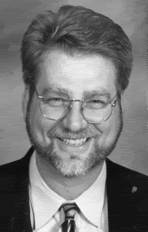
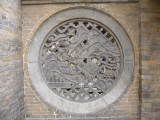
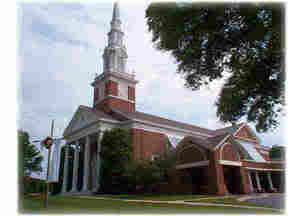
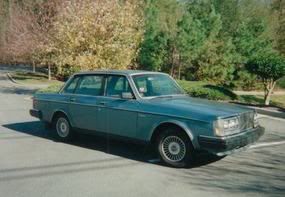 Carter's Roost
Carter's Roost

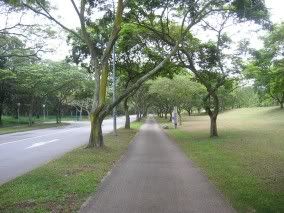
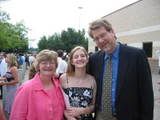

0 Comments:
Post a Comment
<< Home